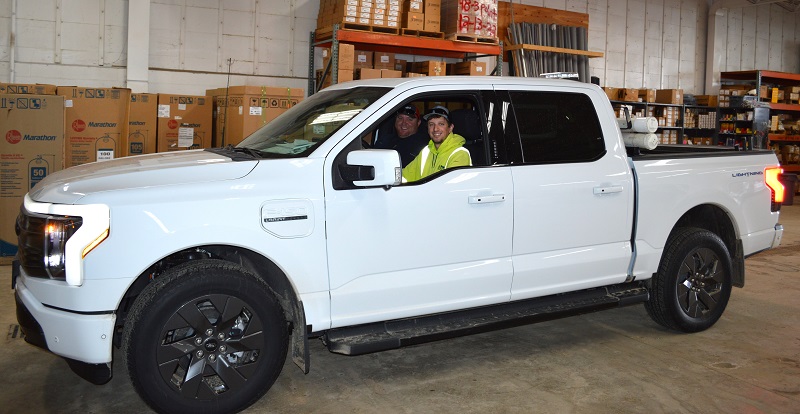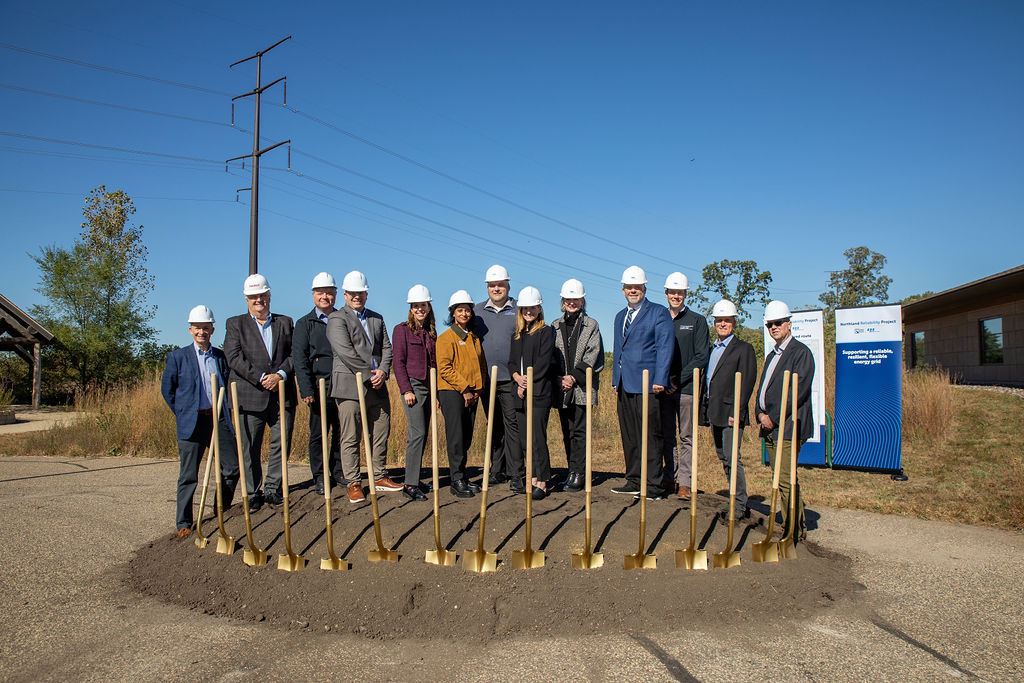Two of Great River Energy’s member-owner electric cooperatives energized their fleet of vehicles by adding an electric pickup to their lineups.
Brown County Rural Electric Association (BCREA), based in Sleepy Eye, added a Ford Lightning pickup and Federated Rural Electric Association (Federated), located in Jackson, received a Rivian R1T pickup.
“Since we are a rural agricultural area, we wanted to have firsthand experience using an electric pickup,” said Jon Beckman, Federated’s marketing specialist. “This pickup is used mainly by the marketing and communications department for events, meeting with members at their homes and businesses, and to educate about electric vehicles (EVs). The pickup bed works great for hauling cookers, displays and equipment. Employees from other departments are also driving the Rivian for meetings or work errands.”

BCREA purchased a Ford F-150 Lightning with an extended battery for the line crew’s daily use. It was purchased to help the cooperative gain knowledge on day-to-day use of an EV. Information about the truck’s performance is being gathered to share with members.
“The line crew uses this pickup during the line patrol in winter and for pulling a 3,500-pound trailer in the summer,” said Brandon Havemeier, BCREA operations and engineering manager. “It is a smooth, quiet ride.”
Pickup specs
Federated’s Rivian pickup is an all-electric vehicle with 328 miles of range on a full charge.
“We bought the Rivian Level 2 charger, which adds 25 miles per hour, and is used in the evenings to recharge the EV,” Beckman said. “We wanted an EV that would make it up to the Twin Cities for meetings without having to stop for charging.”

The manufacturer recommends charging the battery up to 85% in winter and 70% in summer to maintain battery life — just like a cellphone battery. With winter driving, owners can expect the driving range to decline 20-30% based on the outdoor temperature, wind, road conditions and energy needs to head the cab.
The Ford F-150 Lightning has an extended range of 320 miles.
“At the end of the day, crews plug the pickup into a Level 2 charger set for off-peak charging,” Havemeier said. “This means the EV starts to charge at 11 p.m. and is fully charged when the crews come to work at 7 a.m. We expect to see a range of 2.3 miles per kilowatt-hour (kWh) in the summer and 1.5 miles per kWh in winter.”
The charger is also a bi-directional model that can provide backup power during outages.
 " data-object-fit="cover">
" data-object-fit="cover">